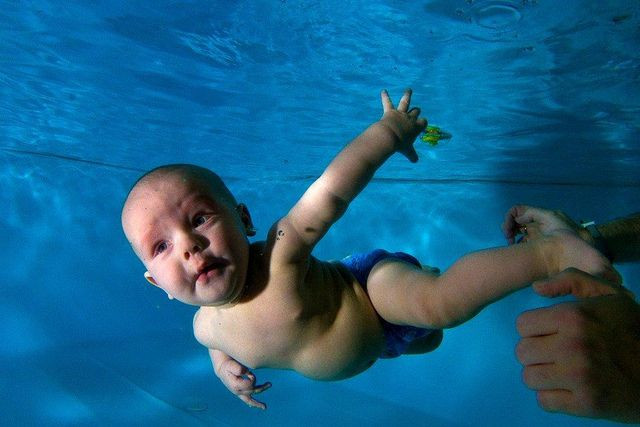Pregnancy And Water Birth: Giving Birth In Water Tub Poses No Risk To Mom Or Baby, Says Study

Hospitals have given women the option to sit in a tub or jacuzzi as part of their labor and delivery. Water birth advocates believe this method can alleviate labor pain, while others suggest it can lead to a low Apgar score (an assessment of how a baby is doing at birth). Now, a recent study published in the Journal of Midwifery and Women’s Health confirms there is no evidence to suggest water births lead to any increased harm to newborns when compared to those who aren't born in water.
"The findings suggest that water birth is a reasonably safe, low-intervention option for women who face a low risk of complications during the birthing process," said Marit Bovbjerg, lead researcher of the study and epidemiology instructor in the College of Public Health and Human Sciences at Oregon State University (OSU), in a press release.
Bovbjerg and her colleagues from OSU analyzed data provided by the Midwives Alliance of North America Statistics Project regarding birthing outcomes from 2004 to 2009 — data commonly referred to as MANA stats. A total of 17,000 women went through their deliveries with certified professional midwives, who provided detailed reports on their cases from medical records. There were a total of 6,500 women who gave birth in water, either at home or in a free-standing birthing center. The researchers compared the outcomes of these births to the outcomes of non-water births. Only births at home or in a birthing center were compared.
The findings revealed babies born in water, as well as their mothers, were no more likely to require a transfer or admission to a hospital. Moreover, the babies born in water did not receive a low Apgar score. This quick test is performed on a baby one minute after birth in order to determine how well the baby tolerated the birth, and five minutes after birth to tell doctors how well the baby is doing outside the womb.
Despite the positive, the researchers did find an 11 percent increase in perineal tearing, or vaginal tears among mothers who gave birth in water. Vaginal tears occur when the baby's head comes through the vaginal open, and is too large for the vagina to stretch around, according to the Mayo Clinic. The tears only involve the skin around the vagina, and typically heal within a few weeks, although some tears are more extensive and take longer to heal.
Some women may see this as a risk worth taking, if they feel the pros outweigh the cons of water birth, such as improved pain management. "There is no one correct choice. The risks and benefits of different birthing options should be weighed carefully by each individual," she said.
In 2014, water births made national headlines, with the American Academy of Pediatrics (AAP) and the American College of Obstetricians and Gynecologists (ACOG) offering real professional guidance on the practice. In an opinion statement, ACOG and AAP stated water birth should be considered an experimental practice that should only occur in the context of a clinical research study. They believe water births can be dangerous and even fatal if there’s contaminated bath water, or if the babies drown after aspirating.
In response, organizations like the American College of Nurse Midwives (ACNM), the American Association of Birth Centers (AABC), and the Royal College of Midwives (RCM) all released statements endorsing water birth as a safe, evidence-based option. The AABC showed its support by releasing preliminary data from nearly 4,000 water births that occurred in birth centers all over the U.S., which showed water births were safe for both moms and newborns.
In a 2014 study, researchers found water immersion during labor among first-time mothers who had midwives led to a 20 percent decrease in C-sections. Water birth was associated with pain relief and fewer interventions during labor. This birthing method is ideal for those who do not want to undergo pharmacological approaches like epidural during labor.
Water births can be a safe, low-risk alternative for women who face low-risk complications during labor. Regardless, these decisions should be made in accordance with a medical professional.
Sources: Bovbjerg ML, Cheyney M, and Everson C. Maternal and Newborn Outcomes Following Waterbirth: The Midwives Alliance of North America Statistics Project, 2004 to 2009 Cohort. Journal of Midwifery & Women’s Health. 2016.
Lukasse M, Rowe R, Townend J et al. Immersion in water for pain relief and the risk of intrapartum transfer among low risk nulliparous women: secondary analysis of the Birthplace national prospective cohort study. BMC Pregnancy Childbirth. 2014.



























